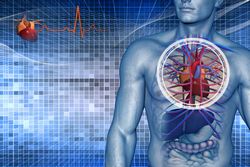Simulating heart mechanics
Cardiovascular diseases are the leading cause of death worldwide. Myocardial infarction or heart attack, the main reasons behind cardiovascular diseases, causes an often-irreparable necrosis of the heart muscle due to lack of blood supply. To provide greater insight into cardiac disease, the EU-funded COMPCARDMECH (Computational tools for cardiac mechanics) project combined theoretical modelling, new imaging modalities and modern simulation tools. The ultimate goal was to design new successful treatment strategies. Researchers developed various computational tools including a framework to simulate cardiac mechanics. Using patient magnetic resonance images, they segmented the heart ventricles and created patient-specific models. Synthetic myofiber and myosheet orientation maps alongside a digital image correlation toolbox were used to track the motion and deformation of the heart. This enabled them to combine anatomical, strain and viability data. The framework was first applied to derive normal human myocardial mechanical properties, in both diastole and systole. It also helped to create normal human maps for myocardial stress that could be further exploited for the in silico optimisation of cardiac therapies. Scientists subsequently applied the pipeline to patients suffering from myocardial infarction, thereby characterising ventricular mechanics in the infarcted and border zone areas. Similar infarcted ventricular models were used to investigate the impact of biopolymer injection. Another framework was used to model heart growth and remodelling under pressure or residual stress, suggesting that residual stress was beneficial for diastolic function. The same growth model reproduced the main features of cardiac hypertrophy caused by systemic hypertension, extending further its original applications. The predictive value of the COMPCARDMECH in silico tools indicates its potential for obtaining quantitative personalised information on heart patients as well as appropriate guidance for future therapy.







